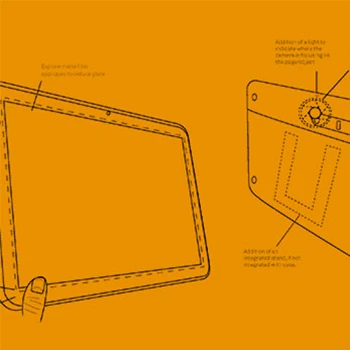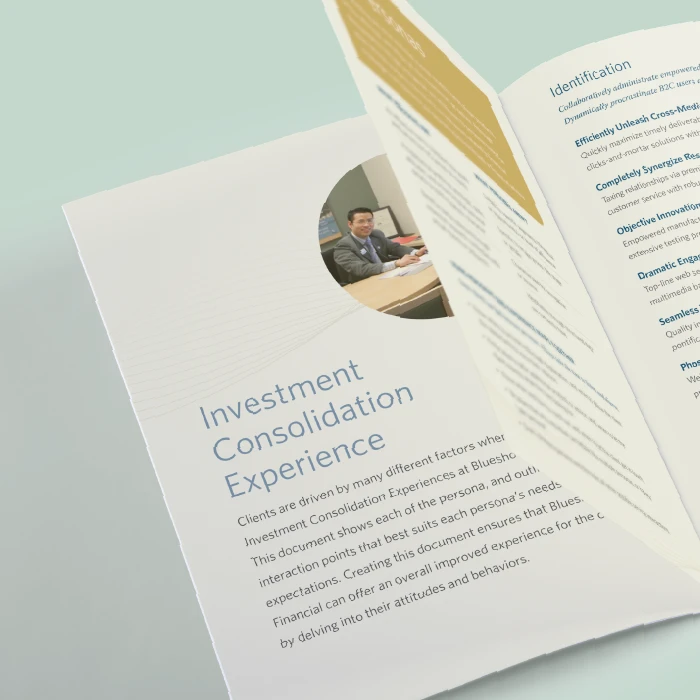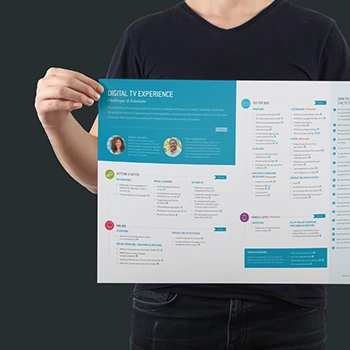What exactly is a user research sprint and how does it differ from traditional research projects?
A user research sprint is a focused, time-bound investigation that uncovers specific insights about user behavior, needs, and motivations within 1-2 weeks. Unlike traditional research that can span months, sprints deliver actionable insights quickly through concentrated research activities. We conduct targeted interviews, observations, and analysis to answer specific business questions about your users and their experience with your product.
Tip: Define your research questions clearly before starting - this helps maximize the sprint's focus and impact.
Why would we choose a research sprint over longer research engagements?
Research sprints work well when you need quick answers to specific user questions, want to validate assumptions rapidly, or need evidence to guide immediate design decisions. They're particularly valuable for teams working in agile environments where research needs to keep pace with development cycles. The Experience Thinking approach ensures we examine user behavior across brand, content, product, and service touchpoints even within the compressed timeframe.
Tip: Consider research sprints when you have a specific hypothesis to test rather than when you need broad exploratory research.
What types of research questions are best suited for sprint formats?
Research sprints excel at answering focused questions like 'How do users currently navigate our checkout process?' or 'What motivates users to abandon their shopping carts?' They work well for testing specific features, understanding user reactions to prototypes, or investigating particular user segments. Sprints are less suitable for deep ethnographic studies or research requiring extensive participant recruitment across diverse demographics.
Tip: Frame your research questions as specific 'how' or 'why' questions rather than broad 'what' questions to get the most from sprint timeframes.
How do you ensure research quality within such compressed timeframes?
Quality comes from rigorous methodology adapted to sprint constraints. We use proven research techniques like structured interviews, behavioral observation, and rapid synthesis methods. Our Experience Thinking framework ensures we capture insights across all experience dimensions even within tight timelines. We recruit participants who match your target users precisely and use established analysis frameworks to extract meaningful patterns quickly.
Tip: Quality beats quantity in sprints - better to have fewer high-quality insights than superficial data from many sources.
What happens if we need more research after a sprint concludes?
Research sprints often reveal additional questions or areas needing deeper investigation. We can extend into follow-up sprints, transition to longer research engagements, or recommend ongoing research programs based on what we discover. Many organizations use initial sprints to identify priority areas for more extensive research investment. The sprint findings provide a strong foundation for planning subsequent research phases.
Tip: Plan for potential follow-up research from the beginning so you can act quickly on new insights without losing momentum.
How do research sprints integrate with design and development workflows?
Research sprints align naturally with agile development cycles and design thinking processes. We typically schedule sprints before design phases to inform creation, during development to validate concepts, or after launch to understand usage patterns. The insights feed directly into design decisions, product planning, and development priorities. Sprint timing can be coordinated with your existing project milestones and sprint cycles.
Tip: Schedule research sprints at decision points in your product development process where insights will have immediate impact on next steps.
What role does foresight design play in user research sprints?
Foresight design thinking helps us examine not just current user behavior but anticipate future needs and market shifts during research sprints. We investigate emerging user expectations, technology adoption patterns, and evolving behavioral trends that might impact your product strategy. This forward-looking perspective ensures research insights remain relevant as user expectations and market conditions change.
Tip: Include questions about user expectations and future needs alongside current behavior patterns to make your research insights more durable.
What research methods do you typically use during sprints?
We select methods based on your research questions and constraints. Common approaches include user interviews to understand motivations, behavioral observation to see actual usage patterns, card sorting for information architecture insights, and rapid usability testing for interface feedback. Each method is chosen for its ability to generate reliable insights within sprint timeframes while supporting the Experience Thinking framework across brand, content, product, and service experiences.
Tip: Mixed methods often provide richer insights than any single technique - we can combine qualitative and quantitative approaches within the sprint.
How many participants do you typically involve in research sprints?
Participant numbers depend on research methods and objectives. For qualitative interviews, 8-12 participants often provide sufficient insight saturation. Usability testing typically involves 5-8 participants per user segment. Survey components might reach 50-100 participants for statistical confidence. We focus on recruiting participants who precisely match your target users rather than maximizing numbers.
Tip: Precise participant recruitment criteria matter more than large sample sizes - better to have fewer perfectly matched participants than many loosely relevant ones.
How do you recruit research participants within sprint timelines?
We maintain research participant databases and partner with recruitment services to enable rapid participant sourcing. For existing products, we often recruit from your current user base. For new products, we use screening surveys and demographic targeting to find relevant participants quickly. Remote research capabilities expand our recruitment reach and reduce logistical constraints that might slow sprint progress.
Tip: Consider providing access to your existing user base for recruitment - current users often provide the most relevant insights about actual usage patterns.
Do you conduct research remotely or in-person during sprints?
We adapt research format to sprint constraints and participant availability. Remote research often enables faster recruitment and broader geographic reach while reducing cost and time barriers. In-person research provides richer observational data and natural interaction contexts. Many sprints combine both approaches - remote interviews for broader reach and in-person observation for detailed behavioral insights.
Tip: Remote research can actually provide more honest feedback since participants are in their natural environments rather than artificial lab settings.
How do you handle data analysis within compressed sprint schedules?
We use structured analysis frameworks that enable rapid insight extraction without sacrificing rigor. This includes real-time synthesis during research sessions, collaborative analysis workshops with your stakeholders, and proven templates for organizing findings. The Experience Thinking framework provides structure for analyzing insights across brand, content, product, and service dimensions efficiently.
Tip: Participate in analysis sessions when possible - stakeholder involvement in synthesis often reveals additional insights and builds stronger buy-in for research findings.
What deliverables do we receive from research sprints?
Sprint deliverables focus on actionable insights rather than comprehensive documentation. Typical outputs include insight summaries highlighting key findings, user behavior patterns with specific examples, actionable recommendations prioritized by impact, and supporting evidence like quotes or usage data. We format deliverables for easy sharing with product and design stakeholders who need to act on the insights quickly.
Tip: Specify your preferred deliverable format upfront - whether you need presentation-ready summaries, detailed reports, or workshop-style findings sessions.
How much time do we need to plan a research sprint?
Sprint planning typically requires 1-2 weeks depending on participant recruitment complexity and research scope. This includes defining research objectives, creating participant screening criteria, developing research protocols, and coordinating schedules. More complex recruiting or specialized user segments may require additional planning time. We can accelerate planning if you have urgent research needs.
Tip: Start planning early if your target users are specialized professionals or hard-to-reach demographics - these segments require more recruitment lead time.
What information do you need from us before starting a research sprint?
We need clear research objectives, descriptions of your target users, relevant product or prototype access, and background context about current challenges or assumptions you want to test. Information about your existing user data, previous research findings, and specific business questions helps us design more focused investigations. Access to product analytics can also inform research design.
Tip: Compile your current assumptions about user behavior beforehand - testing these assumptions often provides the most valuable sprint insights.
How do you customize sprint approaches for different industries or user types?
Each industry presents unique user research challenges requiring adapted approaches. B2B software users have different availability and decision-making processes than consumer app users. Healthcare applications involve privacy considerations and regulatory constraints. Financial services require security awareness and compliance considerations. We modify research methods, participant recruitment, and analysis frameworks to match industry context and user characteristics.
Tip: Share industry-specific constraints or requirements early in planning - this helps us design research approaches that work within your operational context.
Can research sprints work for enterprise software with complex user workflows?
Enterprise software research requires different approaches than consumer products but works well in sprint formats. We focus on specific workflow segments rather than entire enterprise systems, recruit users with relevant system access and expertise, and structure research around realistic usage scenarios. The Experience Thinking approach helps us examine how enterprise software fits into broader business processes and organizational goals.
Tip: Focus enterprise research sprints on specific user tasks or workflows rather than trying to research entire complex systems within sprint timeframes.
How do you approach research sprints for products still in development?
Pre-launch product research often focuses on concept validation, feature prioritization, and usability testing with prototypes. We can research user reactions to design concepts, test prototype usability, or investigate market fit through concept testing. The key is having sufficient product definition - wireframes, prototypes, or detailed concepts - to enable meaningful user feedback during the sprint.
Tip: Have interactive prototypes or detailed mockups ready before the sprint - static concepts often generate less actionable user feedback than interactive experiences.
What happens if we discover our research questions were wrong during the sprint?
Sprint flexibility allows for course correction when initial assumptions prove incorrect. If research reveals unexpected user behavior or different problems than anticipated, we adapt the investigation to follow new insights. This agility is actually a sprint strength - discovering wrong assumptions quickly prevents building products based on incorrect user understanding. We'll recommend follow-up research to investigate newly discovered areas.
Tip: View assumption challenges as valuable outcomes - learning your assumptions are wrong early saves significant development time and resources later.
How do research sprints connect to business outcomes and ROI?
Research sprints drive business impact by preventing costly development mistakes, improving user satisfaction metrics, and increasing conversion rates through better user understanding. The Experience Thinking framework ensures insights connect to business value across brand perception, content effectiveness, product usability, and service quality. We help you identify specific metrics that research insights can influence and track improvement over time.
Tip: Establish baseline metrics before research begins so you can measure the impact of research-driven changes on business outcomes.
Can research sprints help reduce customer support costs and user complaints?
User research sprints often reveal usability issues and confusion points that generate support tickets and complaints. By understanding where users struggle or get confused, you can proactively address these issues through design improvements, better content, or enhanced onboarding. Many organizations see support cost reductions after implementing research-driven interface improvements. The service experience insights from our framework specifically address support-related user needs.
Tip: Analyze your current support tickets before research to identify common user confusion areas - these make excellent research sprint focus areas.
How do research findings influence product strategy and roadmap decisions?
Research sprints provide evidence for strategic product decisions by revealing what users actually need versus what stakeholders assume they need. Insights can reprioritize features, identify new market opportunities, or validate strategic directions. The holistic Experience Thinking approach ensures strategic recommendations consider brand positioning, content strategy, product development, and service delivery implications together.
Tip: Include product stakeholders in research observation sessions - direct exposure to user feedback often has more strategic impact than reading research reports.
What's the business case for investing in research sprints versus other research approaches?
Research sprints offer faster time-to-insight than traditional research while providing more depth than analytics alone. They're particularly cost-effective for validating specific assumptions or investigating urgent usability issues. The concentrated timeframe means research results can influence immediate development decisions rather than becoming outdated during lengthy research cycles. Sprint insights often prevent expensive development mistakes that cost far more than research investment.
Tip: Calculate the cost of building features users don't want or need - research sprints typically cost far less than developing wrong solutions.
How do you measure the success of a research sprint?
Sprint success comes from generating actionable insights that inform specific decisions and drive product improvements. We measure success through insight clarity, stakeholder confidence in findings, implementation of research recommendations, and subsequent impact on user experience metrics. Post-sprint surveys with stakeholders help evaluate whether research provided the needed decision-making support and strategic direction.
Tip: Define success criteria before starting research - knowing what decisions the research needs to support helps evaluate whether the sprint achieved its objectives.
Can research sprints help with competitive positioning and market differentiation?
User research reveals not just what users need from your product but how your solution compares to their alternatives and expectations. Understanding user mental models, comparison criteria, and switching factors helps identify differentiation opportunities. Research often uncovers unmet needs that competitors aren't addressing, providing strategic advantage through better user understanding and foresight design thinking.
Tip: Include questions about user alternatives and comparison criteria in research - understanding your competitive context through user eyes often reveals positioning opportunities.
How involved does our internal stakeholder group need to be during research sprints?
Stakeholder involvement varies by research phase and organizational needs. We typically need stakeholder input during planning and research design, optional observation during research sessions, and active participation in analysis and synthesis sessions. Many organizations find that stakeholder observation of research sessions builds stronger empathy and buy-in for user-centered decisions. The level of involvement can be customized to your preferences and availability.
Tip: Even brief stakeholder observation of user research sessions often generates more empathy and understanding than reading detailed research reports.
What's your approach to collaborating with our existing product and design groups?
We work as an extension of your existing capabilities rather than replacing internal expertise. Our research specialists collaborate with your product managers, designers, and developers to ensure insights integrate smoothly with your existing workflows and decision-making processes. We can adapt our communication style and deliverable formats to match your group's preferences and established practices.
Tip: Introduce our researchers to your product and design groups early - establishing working relationships before research begins improves collaboration throughout the sprint.
How do you ensure research insights actually get implemented rather than sitting in reports?
Implementation starts with making insights actionable and connecting them to specific decisions your stakeholders need to make. We present findings in formats that support decision-making - prioritized recommendations, specific design implications, and clear business rationale. Following up with implementation planning sessions helps translate insights into concrete action items with assigned owners and timelines.
Tip: Schedule implementation planning sessions immediately after research completion while insights are fresh and momentum exists for making changes.
Can you train our internal people to conduct similar research independently?
Building internal research capabilities is a common client goal that we support through knowledge transfer and training. We can involve your people in research processes as observers and participants, provide methodology training, and share frameworks and templates for conducting similar research independently. This approach builds long-term research capabilities while addressing immediate research needs through sprint collaboration.
Tip: Start capability building with simpler research methods like user interviews before advancing to more complex techniques requiring specialized expertise.
How do you handle conflicting opinions about research findings among our stakeholders?
Conflicting stakeholder reactions to research findings are common and often productive for generating deeper understanding. We facilitate discussion sessions that examine different interpretations of findings, identify areas of agreement and disagreement, and develop consensus around actionable next steps. The Experience Thinking framework helps structure these discussions by examining implications across brand, content, product, and service dimensions.
Tip: Use stakeholder disagreements as opportunities to identify additional research questions rather than problems to avoid - different perspectives often reveal important nuances.
What happens if research findings conflict with existing product assumptions or strategies?
Research that challenges existing assumptions often provides the most valuable insights for preventing strategic mistakes. We help organizations process conflicting findings by examining the evidence supporting different perspectives, identifying implications of various approaches, and developing strategies for testing conflicting hypotheses. Sometimes research reveals that assumptions need updating; other times it highlights implementation gaps rather than strategic problems.
Tip: Treat assumption conflicts as opportunities for deeper investigation rather than problems - research that confirms existing beliefs often provides less strategic value.
How do research sprints work with Experience Thinking methodology?
Experience Thinking provides a comprehensive framework that examines user research across four connected dimensions: brand experience, content experience, product experience, and service experience. During research sprints, we investigate how users perceive your brand, interact with your content, use your products, and experience your services. This holistic approach reveals how different experience areas connect and influence each other, providing more strategic insights than focusing on individual touchpoints.
Tip: Consider how your research questions connect across the four Experience Thinking quadrants - insights often emerge from understanding these connections rather than isolated user behaviors.
Can research sprints examine customer journeys and lifecycle experiences?
Research sprints can focus on specific journey segments or lifecycle phases depending on your priorities. We might investigate onboarding experiences, feature discovery patterns, or retention factors within sprint timeframes. The Experience Thinking lifecycle approach examines how users evolve from customers to users to loyal clients, helping identify research focus areas that have the most strategic impact on long-term relationships.
Tip: Map your customer lifecycle before research to identify which segments would benefit most from user research insights - focus sprint efforts on high-impact journey moments.
How do you integrate behavioral data and analytics with qualitative research insights?
Combining behavioral data with qualitative insights provides deeper understanding than either approach alone. We examine analytics data before research to identify behavior patterns that need explanation, then use qualitative methods to understand the motivations and experiences behind the data. This integration helps answer not just what users do but why they do it and how they feel about their experiences.
Tip: Share relevant analytics data before research begins - unusual patterns or unexpected user behaviors often provide excellent starting points for qualitative investigation.
Can research sprints help with AI product development and user acceptance?
AI products present unique research challenges around user understanding, trust, and adoption that work well within sprint formats. We investigate user mental models of AI functionality, comfort levels with automated decisions, and preferences for human versus AI interactions. Research helps identify where AI enhances user experiences versus where users prefer human control. Understanding user expectations helps design AI products that feel helpful rather than intrusive.
Tip: Research user understanding of AI capabilities early in development - user misconceptions about what AI can do often create adoption barriers that design alone cannot solve.
How do research sprints address accessibility and inclusive design needs?
Accessibility research requires specialized methods and participant recruitment to understand diverse user needs and capabilities. We can conduct research with users who have different abilities, examine assistive technology usage patterns, and identify inclusive design opportunities within sprint timeframes. This research often reveals solutions that improve experiences for all users, not just those with specific accessibility needs.
Tip: Include accessibility considerations in all research rather than treating it as separate - inclusive design insights often improve usability for everyone.
Can research sprints investigate voice interfaces and conversational experiences?
Voice and conversational interfaces require research methods adapted to audio interactions and natural language patterns. We examine user mental models for voice commands, conversation flow preferences, and error recovery expectations. Research helps identify appropriate voice personality, optimal conversation structures, and integration with visual interfaces. Understanding user expectations helps create voice experiences that feel natural and helpful.
Tip: Test voice interfaces in realistic usage environments rather than quiet labs - background noise and real-world contexts significantly impact voice interaction success.
How do you research emerging technologies and future user behaviors?
Emerging technology research combines current user behavior investigation with foresight design thinking about future needs and capabilities. We examine early adopter experiences, investigate user expectations for new technologies, and research behavioral adaptations to technological change. This forward-looking research helps anticipate user needs rather than just responding to current behaviors, supporting strategic technology investment decisions.
Tip: Balance investigation of current user behaviors with exploration of evolving expectations - users often adapt faster to new technologies than organizations anticipate.
How quickly can we expect to see actionable insights from research sprints?
Research sprints typically deliver initial insights within 1-2 weeks, with full analysis and recommendations completed shortly thereafter. The compressed timeline means insights remain fresh and relevant for immediate decision-making. We provide preliminary findings during research when possible to enable rapid iteration and course correction. Final deliverables focus on actionable recommendations rather than extensive documentation.
Tip: Plan implementation activities immediately after research completion - sprint insights have the most impact when acted upon quickly while findings are current.
What ongoing support do you provide after research sprint completion?
Post-sprint support varies by client needs and may include implementation planning sessions, design recommendation reviews, follow-up research planning, or periodic check-ins on research impact. We can provide guidance on translating insights into design specifications, help prioritize recommendations, or assist with stakeholder communication about research findings. Many clients benefit from implementation coaching as they apply research insights.
Tip: Schedule a follow-up session 4-6 weeks after research completion to review implementation progress and identify any additional research needs that have emerged.
How do you validate that implemented changes actually improve user experiences?
Validation often involves follow-up research to measure impact of implemented changes on user behavior and satisfaction. This might include usability testing of updated designs, user satisfaction surveys, or analytics analysis to measure behavioral improvements. We can design validation studies that connect research recommendations to measurable user experience improvements and business outcomes.
Tip: Establish baseline measurements before implementing research recommendations so you can quantify the impact of research-driven changes on user experiences.
Can research sprints become part of ongoing product development cycles?
Many organizations integrate research sprints into regular development rhythms, conducting focused research at key decision points or development milestones. This creates a continuous learning cycle where research insights inform development decisions and product updates generate new research questions. Regular research sprints help maintain user-centered decision-making throughout product evolution rather than only at major release points.
Tip: Consider scheduling research sprints before major feature development phases rather than after development completion - insights have more impact when they can influence design rather than just validate completed work.
How do you help organizations build long-term user research capabilities?
Building research capabilities involves methodology training, process development, and cultural change support beyond individual sprint projects. We can help establish internal research practices, train internal researchers, and develop frameworks for ongoing user insight collection. The goal is creating organizational capabilities that enable continuous user understanding rather than depending on external research for all user insights.
Tip: Start capability building with research methods that match your current resources and expertise rather than trying to implement sophisticated research programs immediately.
What's the best way to communicate research findings to executives and non-UX stakeholders?
Executive communication focuses on business implications rather than research methodology details. We develop presentations that connect user insights to strategic decisions, business outcomes, and competitive positioning. Visual storytelling with user quotes, behavior examples, and clear recommendations helps non-UX stakeholders understand research value. The Experience Thinking framework provides structure for presenting insights across business functions.
Tip: Lead executive presentations with business impact rather than research process - connect user insights to revenue, costs, or strategic objectives that executives care about most.
How do research insights influence design system development and maintenance?
User research provides essential input for design system decisions by revealing user mental models, interaction preferences, and usability patterns that should guide component design. Research insights help prioritize design system features, validate component usability, and identify consistency opportunities across user experiences. The product experience insights from our framework specifically inform design system development and evolution.
Tip: Include design system stakeholders in research planning and synthesis sessions - their perspectives help translate user insights into scalable design patterns and components.












